Lupine is an unpretentious and very useful plant with large inflorescences in the form of brushes and the leaves of complex shape. Running, it creates bright and spectacular floral compositions. You can enjoy similar beauty for a long time. The decorative hybrids of Lupine perennially fell in love with gardeners due to the variety of paintings - monophonic, as well as two- and tricolor. Arriving at the site of the garden varieties of this plant, in the future it will be possible to admire the original decoration of its flower bed.
Characteristic Lupina
The history of the cultivation of Lupine has not one millennium, initially it was grown as a medicinal plant, in nutritional purposes and as a stern culture for livestock. Lupine was cultivated by the ancients in the 7-8 centuries BC, gradually this plant was widely distributed on various continents. Wild-growing lupine in suitable conditions significantly grows and can occupy extensive areas of the area of \u200b\u200bnon-cultivated soil, including in the meadows, slopes and in ravines.
In the people of Lupine, sometimes referred to as "Wolchish Bob". This plant of the legume family is obliged to its LUPINUS Latin Name (consonant with Lupus, which means "Wolf"). Lupine is a long-term (less often annual) herbal or shrub plant height average from 50 cm to 1.5 m (separate species can reach 4 m). Its varieties are more than two hundred, and they are all distinguished by enviable decorativeness. Options Coloring Inflorescences Lupine Great Most - His Top Flower Brushes can decorate the places of its grieving with boiling and white, solar-yellow, pink, coral, blue and purple accents in various shades. As a rule, for many years of lupine, difficult care is not required, so grow it on its site is quite forces of the novice gardener.
For this plant, a steady stem and a rod root system are characteristic, capable of delving into the soil to a depth of 2 m and disintegrating it. At the same time, the nipples of bacteria are placed on the roots of lupine, which are removed from the ambient air of nitrogen, bind and accumulate nutrients in the soil. Thanks to such a feature, Lupine is a sediment capable of improving the composition of the soil on which it grows.
Lupina varieties
About 200 varieties of Lupine are known - some annuals can be grown in feed purposes, in addition, decorative garden numbers are about ten. Multi-year plants grow mainly in gardens and flower beds.
Most often in our latitudes are grown:
- multiant Lupine is an unpretentious frost-resistant plant with monophonic or two-color flowers (blue, purple, as well as white color), characterized by spectacular large inflorescences collected in fluffy brushes. This perennial plant with a height of up to 1.2 m is well pollinated, can grow for 8-10 years. Multice Lupine perfectly selection, based on its basis various varieties with snow-white inflorescences, light purple with white, lemon, gentle pink, carmine color;
- white Lupine is self-polishing annual plant with a straight-branching in the upper part of the stem, reaching the height of 1.5- 2 m. Its inflorescences consist of white, light blue or light-pink flowers almost odor, located on the brushes on the helix;
- tree Lupine - This long-term shrub reaches a height of 2 m, is characterized by grayish-green leaves and shortened inflorescences of purple, yellow or white color.
Growing Lupina
This plant is largely unpretentious and can grow on various types of soil, including non-combustible - in this case, it acts as a sewer enriching the composition of the soil. However, it is best optimally suitable for growing lupine loose and well-drained, weakly alkaline, neutral or weakly acidic soil. It is not suitable for its cultivation heavy, too moistened soil. Alkaline soil should be prepared by entering the peat at the rate of 5 kg per 1 m 2, I need to add lime or dolomite flour (4-5 kg \u200b\u200bper 1 m 2). The preparation of the soil under the landing of the lupine must be carried out in the fall, after harvesting and in front of the resampling. Although lupine can carry freezing (up to -8 ° C), subject to their gradual offensive, undesirable for this plant are sharp temperature differences, as well as excess moisture in the soil.
As a rule, Lupine prefers well-lit or slightly privided sections. Gardeners note that in a half worth it can be observed a longer, but less abundant bloom (in addition, inflorescences lose its brightness due to a not enough long period of photosynthesis). Perennial Lupine varieties are able to bloom twice for the season - first in the first half of summer, and then at the end of it either in early September.
Louding Lupina
This plant is able to multiply in various ways - seeds, as well as in a vegetative way (with the help of shifting). It is worth noting that the seeds of many years of lupine can keep the germination over the five-year period. Sowing seeds will be required after the conjunction of the snow and the cessation of the last spring frosts, in about early April - in this case, throughout the growing season, a powerful outlet of the leaves will be formed, while flowering will begin only next year.
If you want to quickly wait for the appearance of inflorescences, you can at the end of October to plant the seed seeds of many years of lupine to a depth of about 2 cm, passing them with a small layer of peat. In this case, overwhelming in the soil in comfortable conditions, they will form a spring shoot, and the flowering of plants will begin by August. In areas with sandy soil, it will take to plant seeds to a depth of 6-8 cm. In any case, they are recommended to be placed at a distance of 40-60 cm from each other. Experienced gardeners are recommended to prepare the planting material in advance, mixing the seeds with pre-crushed and mounted in powder with rhizomes of old plants of Lupine - this measure will speed up the appearance of germs.
It is also possible to grow multi-year lupine from seedlings. To do this, in early March, it is necessary to land seeds in a container filled with loose soil (any soil mixture for floral plants is suitable). Shoots will appear in about two weeks. Having waited for several strong leaflets, it will be necessary to plant plants for a permanent place of growth in open ground. It is not worth tightening with the planting seedlings, as the recycles can be bad to transfer the transplant.
It is worth noting that when growing a lipin of many years of seeds, it is possible to observe the unpredictability of the painting of the inflorescences obtained, since it is not always inherited from parent plants. For example, two-color brushes may lose white, turning into almost either completely blue. In order to preserve the varietal features, including the colors you liked, it is advisable to apply the method of vegetative reproduction.
From young lupine bushes after flowering with the help of a sharp knife, the side shoots are separated (in the spring you can also divide the root rosette at the base of the stem). Old bushes are not recommended to share, as their root system is more revealed, and they are less enduring. Prepared cuttings will need to land in a privided place with sandy soil. After about three weeks, after the development of the original root system, they will need to carefully transplant to a permanent place of growth.
Lupine care
Care for these plants is not particularly difficult. It will be necessary if necessary to gour out weeds, and also periodically loosen the soil. The roasting neck of adult plants over time can be taken out, in such cases it will be necessary to produce a dip, slugging to the base of the stem. For growing lupine, there is quite a periodic moderate watering, however, in the spring you will need to organize a rather abundant first watering. Moderately moistened soil, as well as sufficient illumination, will perform as a collateral of abundant flowering of these plants. Stems of lupine can break under the influence of a strong wind - to avoid such situations it is recommended to encourage high thickets to supports (they can be built out of the wire). In addition, it is worth considering the following - cutting the lupine brushes, you can extend the flowering period of these plants.
Optional, but not superfluous will be feeding fertilizers - many years of Lupine to her very responsive. For this, in the second year of plant growth in spring, as well as in subsequent years it will be necessary to add mineral (non-individual) fertilizers to the soil. It is recommended to make calcium chloride - at the rate of 5 g per 1 m 2as well as superphosphates (20 g per 1 m 2).
Lupine may be subject to attacks of pests - Tly, larvae of the sprout flies, nodule weevils. This plant can also affect the disease in the form of fusariosis, root and gray rot, rust, spottedness, as well as malievable dew. It is easy to fight with them, adding wood ash into the soil and sprinkling the leaves of plants, as well as spraying them with insecticides and fungicides. In the case of the appearance on the leaves and fruits of brown plaque, as well as white in the root zone, it is necessary to completely remove the bush or trim the affected parts of the plants (in this case, new shoots usually grow healthy).
After the end of the flowering of Lupine in the fall, it will be necessary to trim the blooms, yellowed leaves and stalks of plants. In addition, at the same time it will be possible to prepare seeds for landing for the next year. Cropped leaves and stalks of lupine can be used as a fertilizer, for this they will need to be buried at a small depth - for example, near berry bushes. After trimming the long-term lupine, mulching should be made. In order to avoid freezing the roasting neck in the winter cold, the plants will need to be dipped and sprinkled with sawdust. Upon reaching Lupine 5-6 years of age, there is a significant weakening of the intensity of its flowering - so the data of the bushes will be required to periodically delete to plant new plants in their place.
Application of Lupine in Landscape Design
Chaotic scattered groups of multicolored inflorescences of Lupine look great in complex compositions like a mixboarder or a raw cat (a rectangular flower garden located along the track or fence). Located in the company with a mild and loyal cuff, delphinium, Irisami Lupine will look very harmonious. In addition, located in the background, he will exceed the beauty of roses with Malv. In the foreground, it is not recommended to place it, the exception can be a few single plant planting.
Thanks to the ability of lupine to enrich the soil with nutrients (nitrogen, as well as phosphorus and potassium), the practice of planting these plants near fruit trees and fruit shrubs has received distribution.

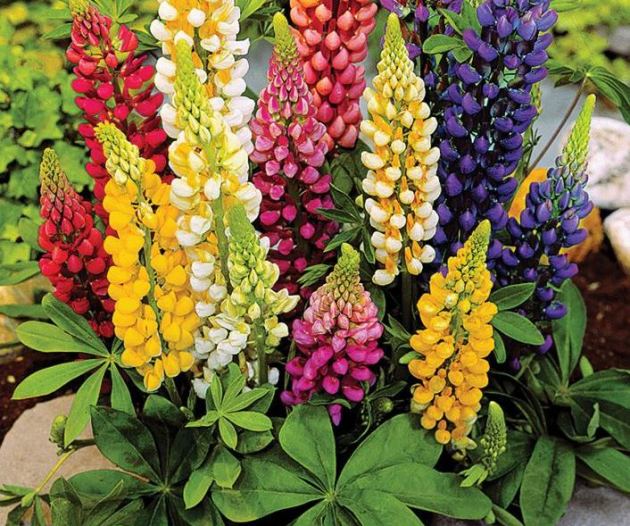
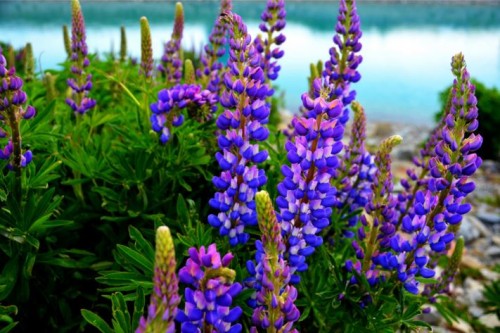



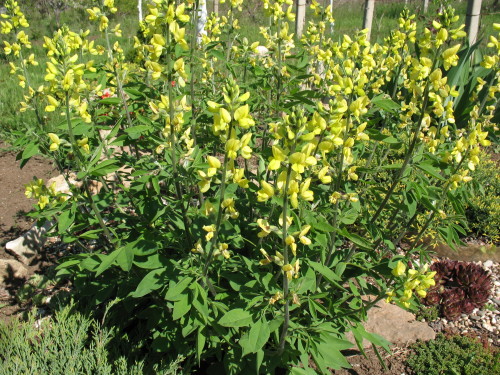
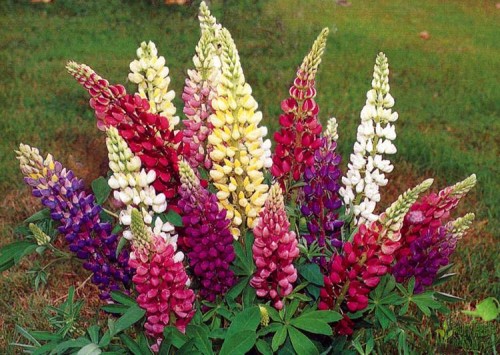
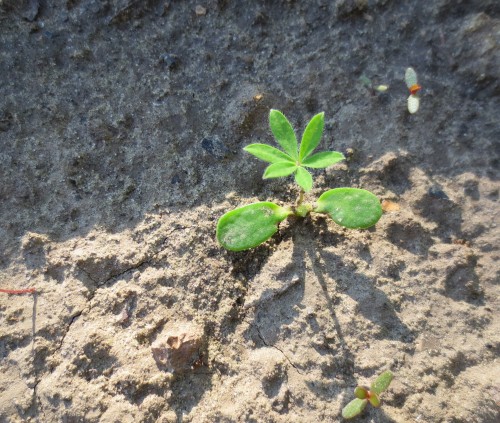
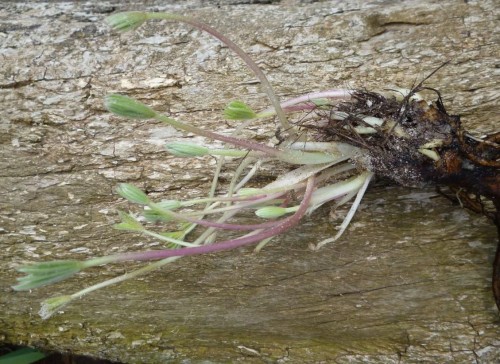
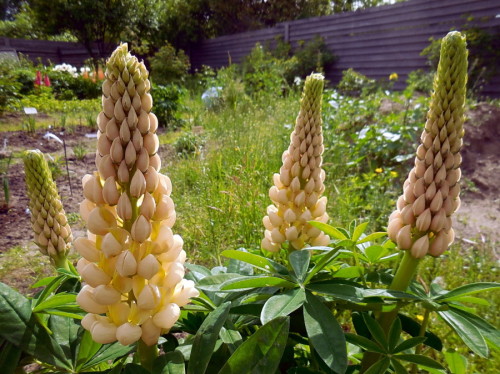
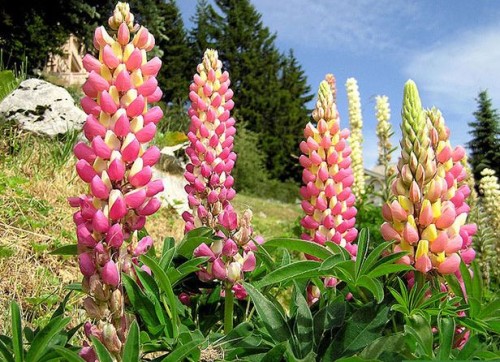
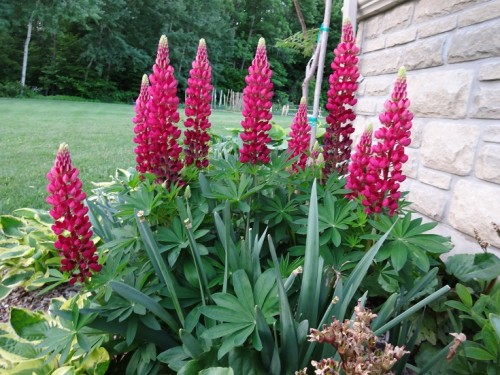
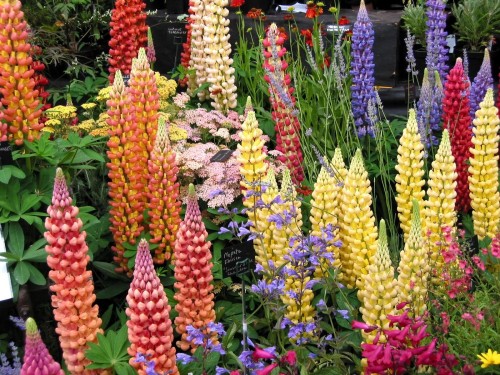
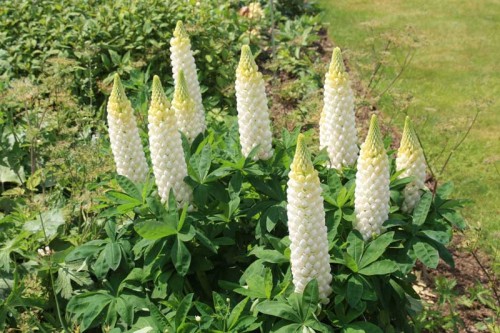
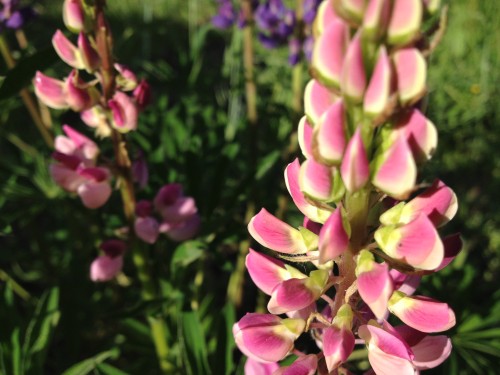
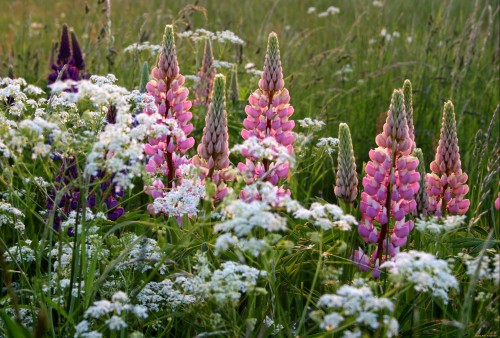













 Start a discussion ...
Start a discussion ...